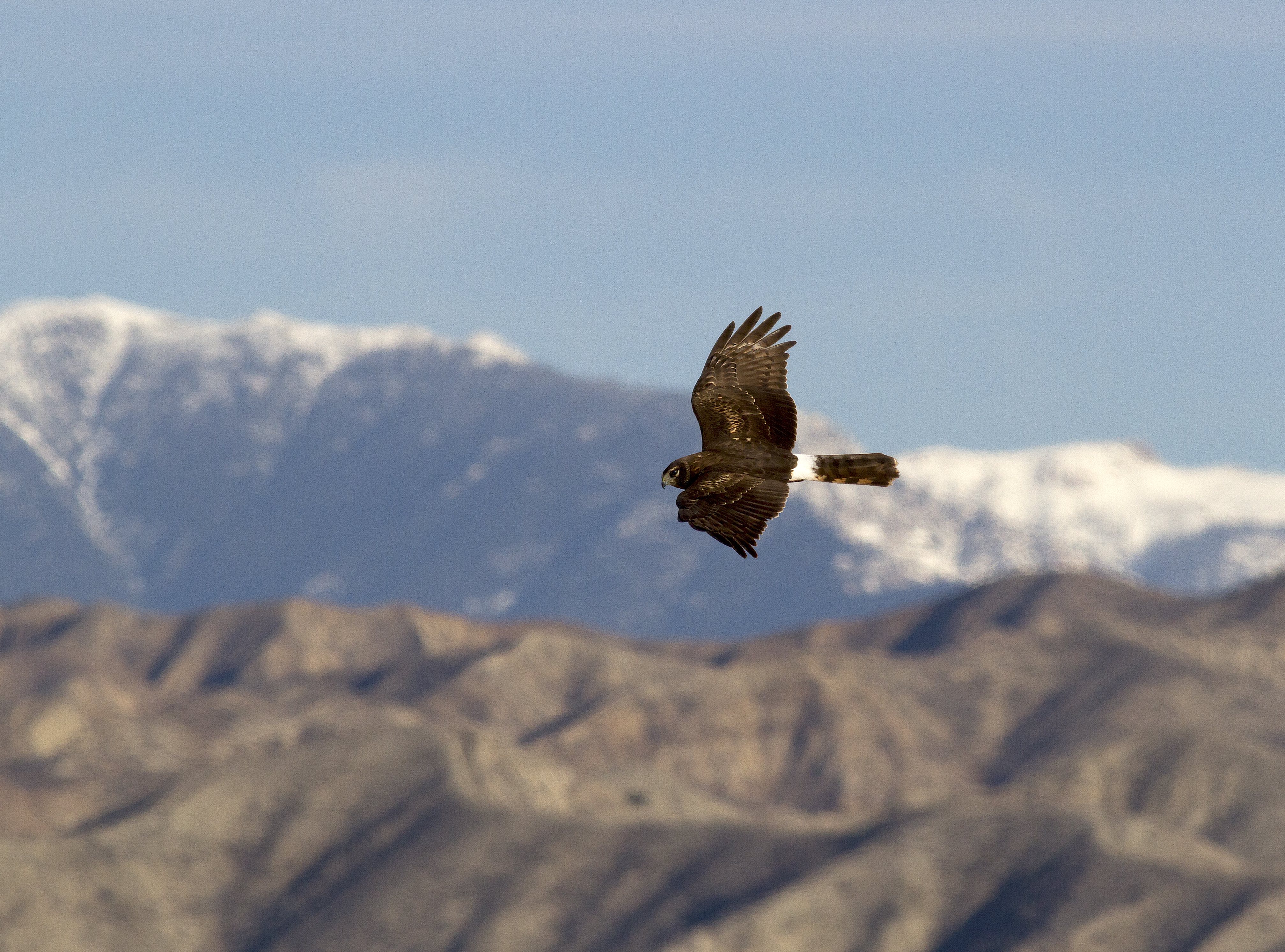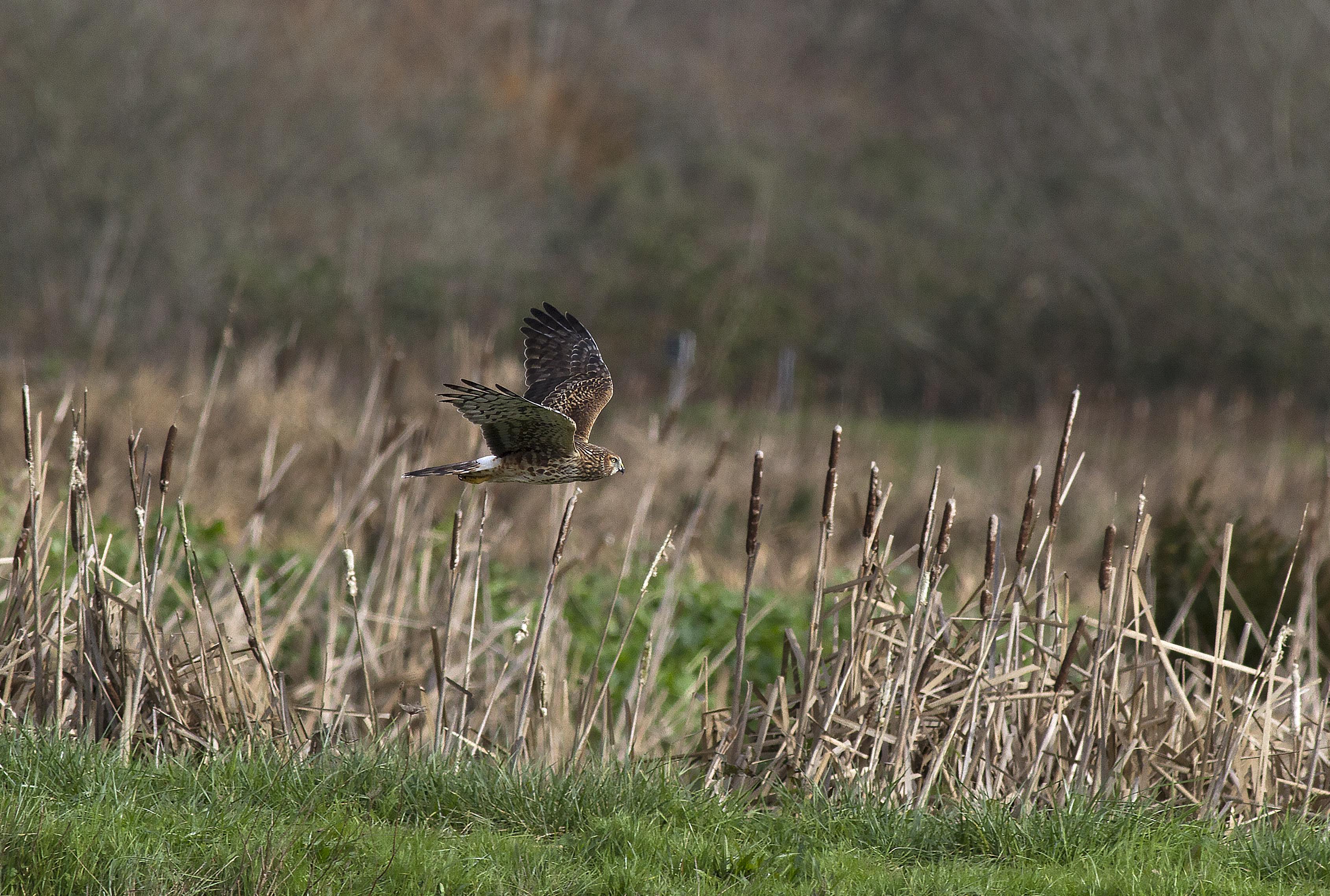Current Distribution Rangewide
Breeding range from northern Alaska and Canada (mostly south of tundra) south to northern Baja Peninsula, Mexico and east to southern Nevada, northern Arizona, southern Utah, northern New Mexico, and northern Texas (references in Smith et al. 2011). Winters primarily from southern Canada south through conterminous U.S., Central America, and Caribbean islands.
List Status
None.
Habitat Affinities
During breeding seasons, uses open wetlands; wet, lightly grazed pastures; old fields; freshwater and brackish marshes, and tundra; also dry uplands, including upland prairies, mesic grasslands, drained marshlands, croplands, cold desert shrub-steppe, and riparian woodland [1]. In winter, may occur in a variety of open habitats dominated by herbaceous cover, including deserts, coastal sand dunes, pasturelands, croplands, dry plains, upland and lowland grasslands, old fields, estuaries, open-habitat flood plains, and salt- and freshwater marshes (references in Smith et al. 2011)
Taxonomy and Genetics
Two subspecies recognized. C. c. hudsonius breeds from western Alaska east across Canada and south, coastally, to northwest Baja California and southern Great Basin east across n. Oklahoma and s. Illinois to Chesapeake Bay; winters from southern portion of breeding range (largely south of Canada) south through Middle America to Colombia and Venezuela [1].
Seasonal Activity
Relatively few observations of nesting during surveys for Bird Atlas suggests that lay eggs at least from 1 April to 1 May [2]. Winter visitors occur mainly from September to March [2]. Reported as fairly common winter visitant to open marshes and fields throughout southern California but scarce and local as a breeder [3].
Life History/Reproduction
Like most other harriers, nests on ground, usually in tall, dense clumps of vegetation, either alone or in loose colonies [1]. Rears one brood per season. Reported as nesting at mouth of Tijuana River and in vicinity of Camp Pendleton [3]. Size of local breeding population in S.D. County expected to vary relative to rainfall and abundance of prey; estimated to be ~25-75 pairs [2]. Important known and/or potential breeding areas include Camp Pendleton and Tijuana River estuary and valley, including Border Field State Park. Additional nesting areas include Carlsbad, Los Peñasquitos Canyon, Otay Mesa, and various locations in southwestern S.D. County.
Diet and Foraging
In summer consumes small- and medium-sized mammals (primarily rodents), birds, reptiles, and frogs; in winter in southern part of range feeds on mammals and birds [1].
Dispersal
Offspring reported as having essentially no fidelity to natal area [1].
Threats
Previously common breeding resident (references in Unitt 2004). Current rarity as a breeder believed to due to loss of most habitat from urbanization. Loss of foraging areas and disturbance of nest sites likely contributors. Ground-nesting behavior creates particular vulnerability. Smith et al. (2011) identified threats as including: (1) ongoing elimination of freshwater and estuarine wetlands in the U.S. (threatens breeding and wintering populations); (2) conversion of native grassland prairies for farming; increase in mechanized agriculture and early mowing in upland areas (threatens nests); (3) overgrazing and the advent of larger crop fields and fewer fence rows; (4) widespread use of insecticides and rodenticides have reduced prey availability.
Special Considerations:
Population estimates and estimates of reproductive success may be difficult to make due to ground-nesting behavior (i.e., difficult to census). In one study of nesting in managed versus non-managed grasslands (4), northern harriers located their nests in fields not disturbed by recent (within previous 12 months) management activities, and nest placement was not influenced by whether fields were dominated by native or nonnative grasses. Generally avoids urban areas, but has been reported to forage along roadsides (5, 6). In New England, Northern Harriers leave wintering areas with potentially suitable nesting habitat presumably in part because of heavy use of coastal areas by humans (Serrentino 1992 in Smith et al. 2011). See Smith et al. (2011; “Conservation and Managementâ€) for lengthy review of management of grasslands (e.g., mowing, burning, grazing), wetlands, and croplands.
Literature Sources
[1] Smith, K.G., S. R. Wittenberg, R. B. Macwhirter and K. L. Bildstein. 2011. Northern Harrier (Circus cyaneus), The Birds of North America Online (A. Poole, Ed.). Ithaca: Cornell Lab of Ornithology; Retrieved from the Birds of North America Online: http://bna.birds.cornell.edu/bna/species/210
[2] Unitt, P. 2004. San Diego County Bird Atlas. El Cajon, CA: Sunbelt Publications. 766 pp.
[3] Garrett, K., and J. Dunn. 1981. Birds of southern California. Los Angeles Audubon Soc. 408 pp.
[4] Herkert, J. R., S. A. Simpson, R. L. Westemeier, T. L. Esker, and J. W. Walk. 1999. Response of northern harriers and short-eared owls to grassland management in Illinois. Journal of Wildlife Management 63: 517-523.
[5] Hager, S. B. 2009. Human-related threats to urban raptors. Journal of Raptor Research 43(3):210-226.
[6] Serrentino, P. 1992. Northern harrier, Circus cyaneus. Pages 89-117 in Migratory nongame birds of management concern in the northeast. (Schneider, K. J. and D. M. Pence, Eds.) U.S. Fish Wildl. Serv. Newton Corner, MA.

